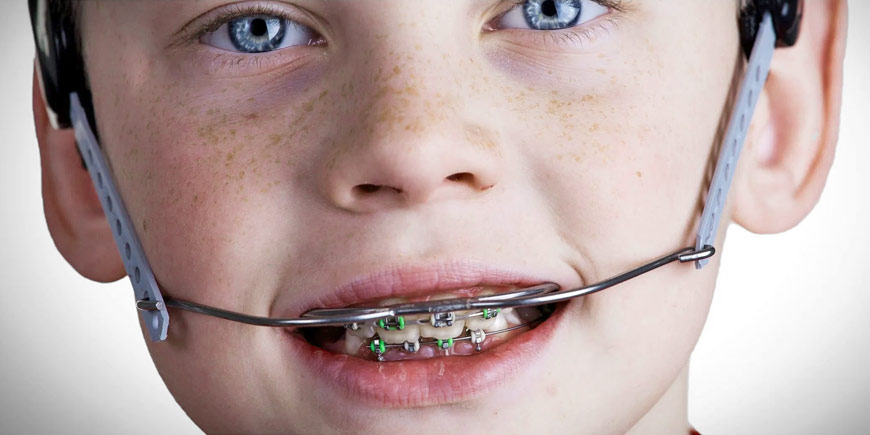Orthodontic treatment, including dentofacial orthopedics, can greatly improve your oral health and enhance your smile. However, there may be times when unexpected issues arise, leading to orthodontic emergencies. Knowing how to handle these emergencies can make a significant difference in your comfort and the success of your treatment. In this comprehensive guide, we will explore various orthodontic emergencies that can occur during Dentofacial Orthopedics in Abu Dhabi and provide essential tips on what to do in each situation.

Common Orthodontic Emergencies
1. Broken or Loose Brackets and Wires
One of the most frequent orthodontic emergencies is a broken or loose bracket or wire. This can happen due to various reasons, such as eating hard or sticky foods or accidental trauma to the mouth.
What to Do:
- If a bracket becomes loose, leave it in place as long as it is not causing discomfort or posing a risk of swallowing or inhaling.
- If a bracket is fully detached, place it in a small container and bring it to your orthodontist.
- Use orthodontic wax to cover any sharp or irritating edges to prevent irritation of your cheeks, lips, or tongue.
- If a wire is poking you, try to gently push it back into place using a clean cotton swab or the eraser end of a pencil. If you can’t reposition it, use wax to cover the sharp end.
2. Pain or Discomfort
Orthodontic treatment may occasionally cause mild discomfort, especially after adjustments. However, severe pain should not be ignored, as it could indicate a problem that requires attention.
What to Do:
- Over-the-counter pain relievers like ibuprofen or acetaminophen can help alleviate discomfort. Follow the recommended dosage instructions.
- If your mouth is sore due to braces or appliances rubbing against your cheeks or lips, use orthodontic wax to create a protective barrier.
- If pain persists or worsens, contact your orthodontist for advice.
3. Loose or Lost Spacers
Spacers (also known as separators) are used to create space between teeth before the placement of braces or bands. Sometimes, they can become loose or fall out.
What to Do:
- If a spacer becomes loose but is still in place, try to avoid playing with it or disturbing it further.
- If a spacer falls out, contact your orthodontist for instructions on whether it needs to be replaced or if your appointment should be rescheduled.
4. Poking or Irritating Wires
Occasionally, the wires in your braces may shift or extend, causing discomfort or irritation.
What to Do:
- Use clean tweezers to carefully reposition the wire back into place. If this is not possible, apply orthodontic wax to the poking wire to provide relief.
- If the wire continues to irritate you, contact your orthodontist for guidance.
5. Broken or Loose Appliances
In some cases, orthodontic appliances or expanders may become loose or break, affecting the progress of your treatment.
What to Do:
- If an appliance becomes loose but is not causing discomfort, leave it in place until you can see your orthodontist.
- If an appliance is broken or causing pain, contact your orthodontist immediately for guidance on whether it needs to be repaired or replaced.
Steps to Prevent Orthodontic Emergencies
While some orthodontic emergencies are unavoidable, there are steps you can take to minimize the risk of encountering them:
1. Follow Orthodontist’s Instructions
Listen carefully to your orthodontist’s instructions regarding oral hygiene, diet, and care of your braces or appliances. Adhering to their guidance can reduce the chances of emergencies.
2. Maintain Good Oral Hygiene
Practicing excellent oral hygiene, including regular brushing and flossing, helps prevent cavities and gum problems that could complicate orthodontic treatment.
3. Eat a Braces-Friendly Diet
Avoid hard, sticky, and chewy foods that can damage braces or wires. Stick to orthodontist-recommended dietary guidelines.
4. Use Orthodontic Wax as Needed
Orthodontic wax is your friend. Keep it on hand to quickly alleviate discomfort caused by brackets, wires, or appliances.
5. Attend Regular Check-Ups
Stay on schedule with your orthodontic appointments. Regular check-ups allow your orthodontist to detect and address issues before they become emergencies.
When to Contact Your Orthodontist
While some orthodontic issues can be managed at home temporarily, it’s crucial to contact your orthodontist whenever you encounter an emergency or problem. Timely communication can prevent complications and ensure that your treatment stays on track. Reach out to your orthodontist if:
- You experience severe pain that does not subside.
- You have a broken appliance or loose brackets/wires that are causing discomfort.
- A spacer or expander falls out or becomes loose.
- You are unsure about how to handle a specific situation.
Emergency Orthodontic Care during Non-Business Hours
Orthodontic emergencies can occur at any time, even outside of your orthodontist’s regular business hours. In such cases:
- Evaluate the Situation: Determine the severity of the emergency. If it’s a mild issue that can wait until the next business day, consider managing it temporarily using orthodontic wax or other home remedies.
- Contact Your Orthodontist: Most orthodontic practices provide emergency contact information for after-hours situations. Reach out to them for guidance.
- Visit the Emergency Room (if necessary): In extreme cases, such as severe trauma to the face or mouth, it may be appropriate to visit the emergency room before seeing your orthodontist.
Conclusion
Orthodontic emergencies can be unsettling, but knowing how to handle them can alleviate stress and discomfort. Always follow your orthodontist’s instructions, maintain good oral hygiene, and be prepared with orthodontic wax and contact information for emergencies. When in doubt, don’t hesitate to reach out to your orthodontist for guidance and support. With proper care and prompt action, you can navigate orthodontic emergencies and continue on your journey to a beautiful, healthy smile with dentofacial orthopedics.




